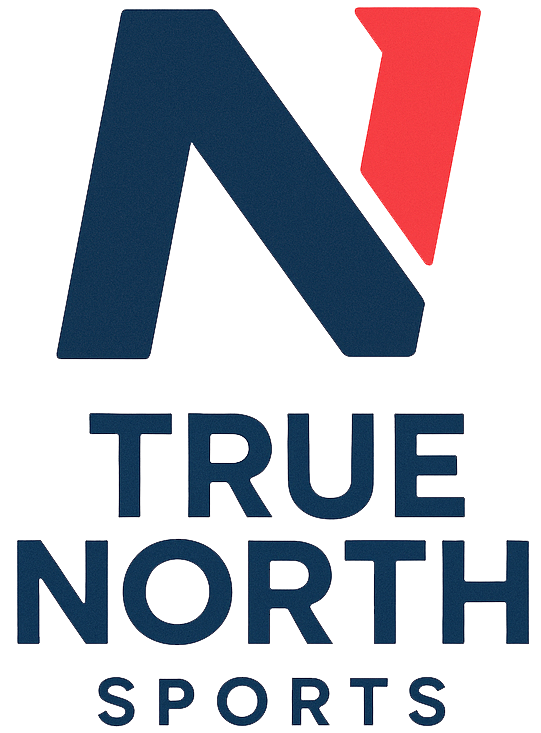Do These Pads Fit? How to Size Shoulder, Elbow, and Shin Pads Properly
Share
Whether your child is just starting out or already deep into rep hockey, making sure their gear fits properly is one of the most important things you can do as a parent. Not only does well-fitted equipment help prevent injuries, but it also improves mobility, confidence, and focus on the ice.
One of the most common challenges parents face is figuring out if shoulder pads, elbow pads, and shin guards actually fit the way they should. Many players — especially younger ones — end up wearing gear that’s too big, thinking they’ll grow into it. Unfortunately, this can lead to poor habits and unnecessary risks.
Let’s break down how each piece of gear should fit, what to avoid, and how you can check sizing at home — plus where to find a printable sizing chart.
Shoulder Pads: Protection Without Restriction
Shoulder pads are designed to protect the clavicle, shoulders, chest, ribs, and spine. But they shouldn’t limit arm movement or shift around when your child skates.
How to tell if they fit:
- The shoulder caps should sit squarely on top of the shoulders — not too far forward or drooping down the arms.
- The front panels should overlap the pants slightly, without riding up when the arms are raised.
- The back protection should cover the upper spine, stopping just above the jersey line.
- There should be no large gaps between the shoulder pad and elbow pad when the arm is extended.
Common issues with poor fit:
- Pads that slide when skating or falling
- Gaps between gear exposing skin
- Restricted shooting or passing motion
- Irritation under the arms or around the neck
Tip: Always check fit with a jersey on over the pads to simulate game conditions.
Elbow Pads: Secure and Gap-Free
Elbow pads are there to protect one of the most frequently impacted joints in hockey — especially during falls, collisions, or contact with the boards.
How to tell if they fit:
- The elbow sits firmly in the center of the cup with no wiggle room.
- The bicep guard should overlap the shoulder pad slightly.
- The forearm guard should reach the cuff of the glove without leaving a gap.
- Straps should be snug but not tight enough to leave marks or cause discomfort.
Common issues with poor fit:
- Pads that twist or slide off mid-game
- Gaps between elbow pad and glove (exposing the forearm)
- Circulation cut off from overly tight straps
- Kids refusing to wear them because of discomfort
Pro Tip: Look for models with extended forearm protection for aggressive players or those in contact-heavy positions.
Shin Guards: Full-Coverage Confidence
Shin pads protect the area from just below the kneecap to the top of the skate. They’re essential for blocking shots, absorbing impacts, and preventing injuries during falls or scrums.
How to tell if they fit:
- The kneecap sits squarely in the molded knee portion of the pad.
- The shin guard extends down to the top of the skate tongue when the knee is slightly bent.
- Straps hold the pad securely in place — not loose or overly tight.
- There’s no major gapping between the bottom of the pad and the top of the skate.
With or without tape?
Most players use shin pad tape to reinforce the fit and avoid shifting during games. If your child is still learning to skate, Velcro straps alone might be enough — but as intensity increases, tape becomes more important.
Common issues with poor fit:
- Pads that rotate around the leg or slide down
- Knee not centered, reducing protection
- Pads too long, jamming into the skate boot
- Bulky pads interfering with stride
What About Growth?
It’s tempting to buy gear a size up “so they can grow into it,” especially with how fast kids outgrow things — but in most cases, it’s not worth the risk.
Oversized protective gear is often more dangerous than gear that’s slightly snug. A pad that’s too big won’t stay in place during impact, leaving critical areas exposed.
Instead of sizing up, look for adjustable or budget-friendly intermediate models, or shop at stores that offer mid-season trade-in programs. Many specialty hockey shops will fit your player and re-fit them again mid-season if needed.
Final Thoughts
Getting the right fit in shoulder pads, elbow pads, and shin guards isn’t just about following a size chart. It’s about watching how your child moves in their gear, checking for signs of discomfort, and making sure nothing is too loose or too tight.
The right equipment builds confidence, helps develop proper technique, and keeps your player safer every time they hit the ice.
When in doubt, ask your local hockey shop for a free fitting — or reach out to our team for guidance.
